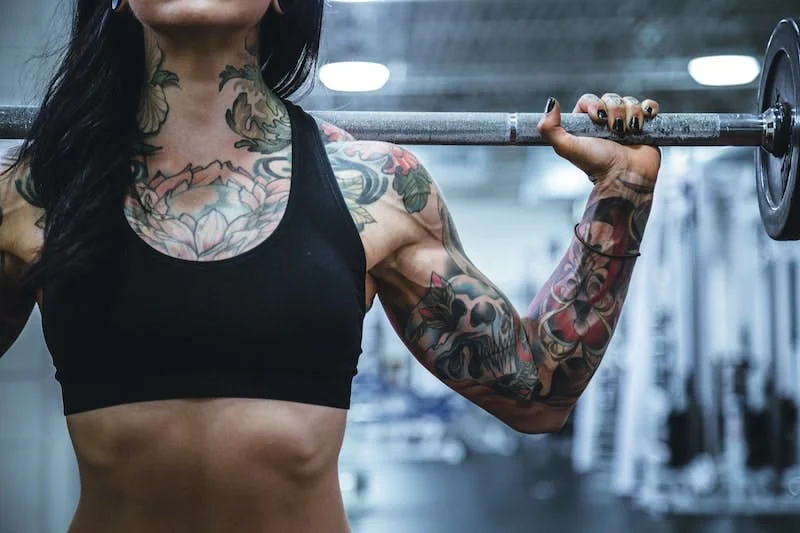
Reading Room: India’s Female Body-builders are Chiseled, Muscled and in Bikinis
In July this year, two women from Manipur made India proud by winning the second and fourth positions — at a bodybuilding championship in the Maldives. They are the most recent chapter in the story of India’s female bodybuilders — which goes back a decade, when Mamota Devi Yumnam won a bronze in Tashkent (in 2012). Mamota, also from Manipur, was a mother of three at the time.
Indian women are expected to behave in a certain manner. Housewives or working women, they are expected to not draw attention to themselves. Any deviation from this tends to invite stares and glares.
It was the stares that got to Mamota. She used to be dainty. Or at least that was how people remembered her. As she began training and putting on muscle mass, people began to stare, which made her conscious about going shopping and wearing makeup. The very identity and image of bodybuilders like Mamota goes against what India expects and demands of its women.
Since her legendary win at Tashkent, Mamota has participated in numerous other international tournaments and relocated to New Delhi, where she runs a gym with her husband and CRPF officer, Borun.
Today’s newsletter is about women like her who have found their calling in bodybuilding — a sport that used to be male-dominated. It is not a cheap hobby or sport, considering the diet alone that accompanies training. Despite this, it’s gaining popularity among women from Tier 2 and Tier 3 cities. For example, Sanjana, the winner of a contest held in Assam in 2022, works as an official in the customs department and lives in a small town in Uttar Pradesh.
The first time I saw photographs of women posing with grace and confidence, with manicured nails and exquisite makeup, it was impossible to not be in awe of their six-packs and biceps. But not everyone is looking at them with admiration and respect.
Everything about female bodybuilders is a cause for panic in a society that values its “middle class morals”. A chiseled, “masculine” body! The need to wear bikinis in tournaments! The fact that women can even train that hard! It’s like someone is writing a complete obituary for parampara and sanskar.
A Mumbai-based bodybuilder had to pay the price of chasing her ambition when her husband asked for a divorce (her own family was not being supportive). A Delhi-based bodybuilder’s sister stopped talking to her, because she disapproved of her clothing choices. While out in public, many athletes have also spoken about being misgendered and being called names.
That women are pursuing bodybuilding after they get married and have children, in their 30s and 40s, is fascinating. Their stories showcase the transformative power of fitness training and bodybuilding for women. Priya Singh, who was born into an economically disadvantaged family in Bikaner and survived a child marriage, trained despite backlash and death threats from her family.
Natasha Pradhan left behind a violent marriage to work as a receptionist at a gym, who lifted weights during her free time. A few months later, she was ripped and competing alongside other female bodybuilders. “Meri life main mujhe kabhi bhi success nahin mila. Main abhi 34 saal ki hoon, yeh mera last chance hai,” she said.
The Reading Room Take: For most women, trans and non-binary people in India, it’s not possible to navigate everyday life without thinking about their choices, freedom and autonomy. (Think about how women are treated when they’re on their period, or how often they get to decide how many children they want to have, or when they want to get married.) It can feel like the rules of their lives are dictated not by themselves, but rather by many other people in their lives — from their parents, their in-laws, husbands and partners. Don’t even get us started on the social pressures to look a certain way, which become a self-imposed standard.
There’s something inherently radical about female bodybuilders. It’s not just their journeys in body sculpting and fitness; it’s the fact that they have taken back control over their bodies and are choosing to mold them in the way they see fit, no matter how tough it is, or what their relatives and larger society will say.
Editor’s note: ‘The idea of India, and what it is to be an Indian, is a crucial one today.’ You could utter this line at any given point of time in the last 80 years, and it would still ring true. We are a country caught between India and Bharat, with a large part of the population (from both camps) thinking that we have to choose between one or the other. Everything is supposed to be black and white. But in a country that is so vast, diverse and powerful globally, is that even possible? We are gradually outgrowing the tag of a ‘young democracy’, and India is in a churn — politically, economically, socially. And yet, in some ways, the country seems stuck in time.
How do we see ourselves today? This Reading Room series examines what it means to be Indian, in a rapidly changing world. This is part one of the series.
Let us know what you think about this newsletter. If you like it, please forward it to your friends and people you love. Ask them to click here and register for the newsletter.
So long, and see you next Wednesday.
Team Reading Room




